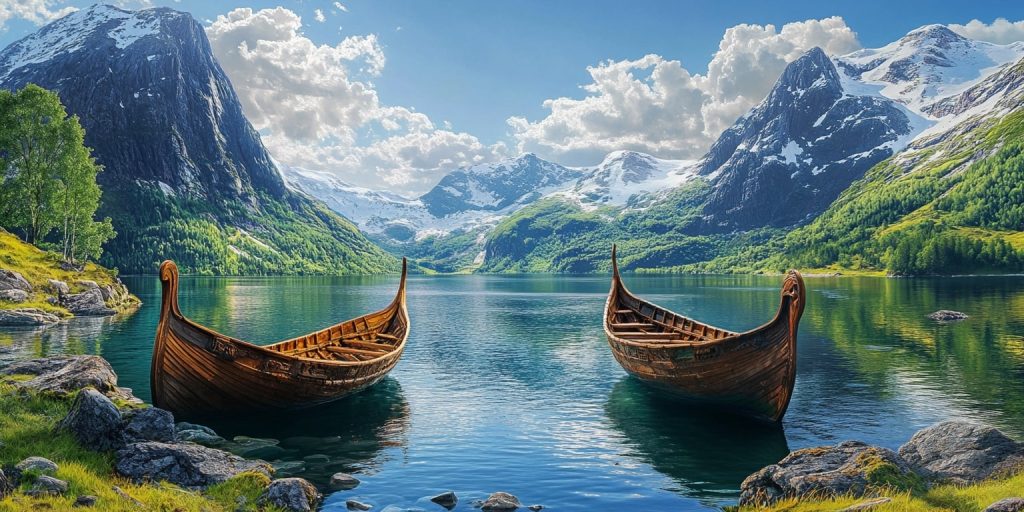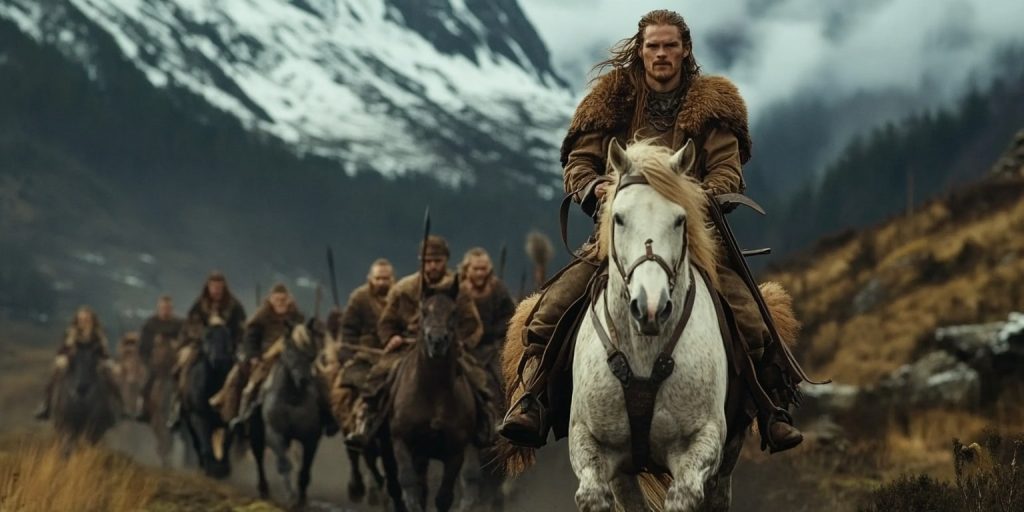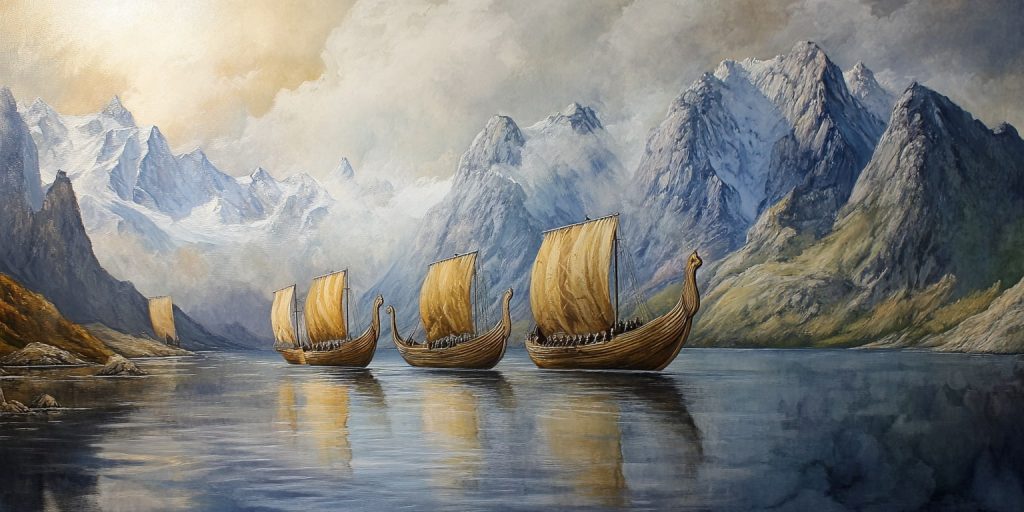Daily Life in the Viking Age, Viking Ships, Vikings
What Vehicles Did Vikings Use?
Viking transportation shows their strength and smart thinking. They were great at sailing and used ships ahead of their time. But they didn’t just use vessels.
They also had other ways to move around, which helped them conquer new lands and trade with others. Let’s look at how they traveled by sea and land, utilizing various transportation methods like trucks and ships.
This shows how they were ahead of their time, much like today’s advancements, such as hybrid car battery replacement, are transforming modern vehicles and keeping them efficient on the road.
Introduction to Viking Transportation
The Viking Age was from late 8th to early 11th century. It was a key time in European history, shaping the logistics of trade and communication, much like a modern transportation company does today. The Vikings had a great seafaring tradition.
They built advanced ships, like the longships, to explore, trade, and conquer. These ships were crucial for their travels.
The Vikings knew the seas well and built ships that could handle the North Atlantic. Their ships were not just for war. They also helped in cultural exchange and growing their economy, which was deeply tied to logistics and trade services.
So, how did Vikings travel? On land, the Norsemen used horses and wagons. While their sea achievements are famous, their land travel was also important. It helped them establish trade routes and expand their influence in Europe, providing a network for commerce and contact.
The Vikings’ history shows how they used their environment and technology to grow. They kept innovating and adapting, leaving a lasting impact on travel and exploration.
In short, the Vikings combined sea and land travel skills. This made them strong and dynamic in their travels during the medieval period.
The Iconic Viking Longship
The Viking longship is a marvel of history. It was designed and built with great skill. These ships were key in Viking explorations and battles.
Design and Structure
The Viking longship’s design was very smart. It was made from different types of wood, chosen for their strength and flexibility. The hull was built using the clinker method, where planks were riveted together.
This method made the ship light but strong, optimizing the logistics of its maritime service. It could easily sail on open seas and shallow rivers.
The longship had a symmetrical shape for better control. It had a shallow draft for easy beach landings, providing a service facilitating coastal access. A single mast with a large sail made it great for sailing and rowing, akin to the efficiency seen in modern freight carriers.

Usage in Exploration and Warfare
The Viking longship was very useful. It helped the Vikings explore and settle new lands, expanding their reach like a successful transportation company. They sailed to places like Iceland and North America.
The longship was fast and agile in battles, allowing quick raids and escapes. Its flat bottom made landing on beaches fast, making the Vikings fierce warriors.
Smaller Boats for Inland Waters
Viking small boats were key for their inland trips, enabling them to load goods efficiently. They helped navigate rivers, lakes, and coasts. This made trade, transport, and daily life easier for Vikings, providing essential services to their communities.
Knar Boats for Trade
The Knar vessels were important for the Viking trade. They were built for carrying goods, not speed. This made them great for moving cargo over long distances, much like a modern freight transportation company.
Their strength and ability to handle Nordic waters were crucial. They were the heart of Viking commerce.
Ferries and Small Craft
Vikings also used small crafts and ferries for transport, ensuring reliable contact with other regions. These boats were vital for crossing short distances, serving as a means of transport for various customer needs. They helped with local trade and fishing.
Their ability to adapt made them essential in Viking life, functioning like a versatile transportation company.
Viking Land Transportation Methods
The Vikings were known for their skill in sailing. But they were also good at moving on land. They used different ways to travel on land, which helped their society and economy thrive through improved logistics.
Horseback Riding
Horses were key for Viking land travel, acting as drivers for their transport needs. They were fast and helped with communication, trade, and war, providing essential services to their communities. Vikings bred strong horses to handle the tough Scandinavian weather.

Carts and Wagons
Vikings also used carts and wagons to move things, a vital logistics component in their society. These vehicles helped carry heavy items over land, similar to the role of trucks in freight transport today. They were important for moving goods like timber and food.
The Vikings’ transport system was strong because they used horses, carts, and wagons. This mix of sea and land travel helped them move easily and efficiently.
Viking Transport: Methods and Efficiency
The Vikings were known for their excellent transport methods, which were key to their success in exploring and conquering new lands. Their Viking longships, built to be fast and carry a lot of cargo, were a big part of this success.
They also used smaller boats to travel on rivers and lakes. This helped them trade and talk to each other in their territories. Their use of different boats showed how smart they were at moving things around.
On land, they used horses and carts to move goods and people. This helped them get things done quickly, no matter where they were. Their use of both sea and land transport showed how flexible they were.
The Vikings knew how to use their environment and technology to move things well. This helped them trade, raid, and explore, acting as a transportation company for their goods. They became famous for their skill in moving around and managing things.
Impact of Norse Innovation on Modern Transportation
The Vikings made big steps in transportation that still affect us today. Their work in the sea has shaped how we travel now. Their ideas are key to our modern ways of moving around, influencing transportation companies today.
Influence on Maritime Navigation
Viking sailors were experts at finding their way across the ocean, driving their exploration and trade efforts. They used the sun and stars to guide them, showcasing their need for navigation in travel logistics. Their methods helped create better ways to navigate the seas today.
Legacy in Modern Shipbuilding
Viking ships were fast, strong, and easy to steer. Their longships were made for long trips and short ones, too. Thanks to Viking designs, today’s ships are built with similar goals.
The Vikings changed how we travel by sea, setting the stage for future transportation companies. Their designs and ways of navigating are still used today. They show how old ideas can still guide us in new ways.
Conclusion
The Viking transportation legacy shows the cleverness and strength of Norse culture. They made and used many transport types, like longships and knar boats, for trade. These ways helped them travel far and conquer, making them famous in sea history.
The Vikings’ impact on transport is still seen today. Their designs, mixing function and flexibility, inspired later times. They moved goods and people well, helping them grow and survive.
The Vikings’ transport advances were key for them and the world. Their longships and land vehicles set high standards for travel, driving advancements in logistics and transport. By learning about their transport, we understand travel’s history better and honor their legacy in logistics.

